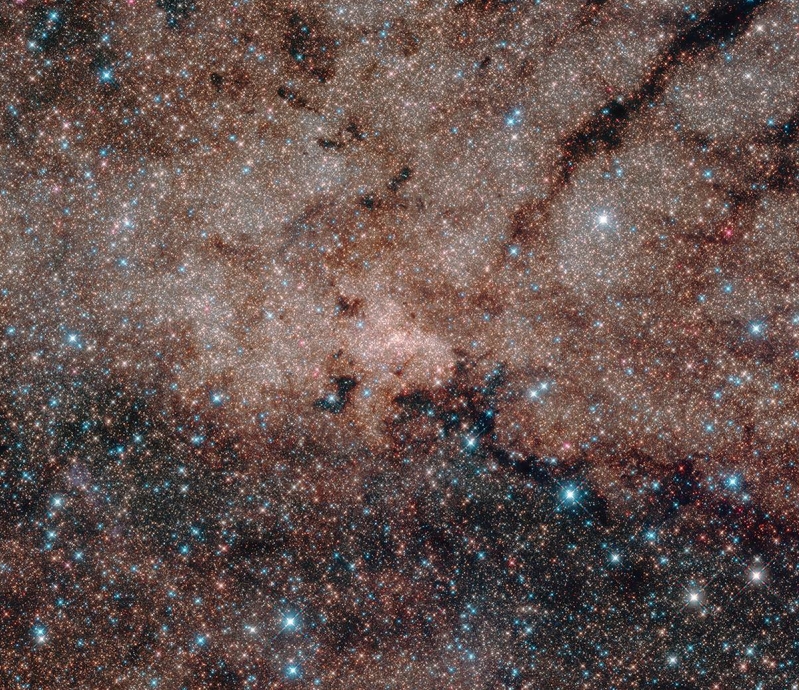
The sophisticated technology of Hubble Telescope helped scientists to observe what is lurking at the center of our galaxy. Thousands of light years away, experts found there's a super massive black hole that is about four million times the mass of our own sun.
Estimates show the center of our Milky Way galaxy is located at about 27,000 light-years away from our planet. This particular area is located in the constellation Sagittarius and has massive amount of stars. In fact, it has more than one million stars packed together in a dense area.
The image above came from nine separate images of Hubble's Wide Field Camera 3, which can shoot pictures for about 50 light-years away. The telescope uses infrared light, which is invisible to humans, to capture images at an unimaginable distance.
CTV News reports the red starts are "shrouded by intervening dust" and the black background is extremely dense clouds of dust that Hubble's infrared technology cannot detect.
The thick clouds in the center of our galaxy hide numerous cosmic objects. In order to see what is beyond that clouds, scientists are planning develop much powerful telescope than Hubble.
Interestingly, the scientists discovered the supermassive black hole by measuring the movements of stars around it. Black holes have very powerful gravitational force that even light-fastest thing in the universe- cannot escape from it. The supermassive black hole at the center of Milky Galaxy is called Sagittarius A* (Sgr A*).
The discovery about Milky Way's core could allow scientists to learn more about the properties of the nuclear star cluster. It may also allow them to figure out how this star cluster was formed in the first place. Also, this gives scientists the opportunity to look deeper into the cosmos and peer into the beginning of time (Big Bang). Their future discoveries could unlock the secrets of the Universe and how it was made.
As of now, the Hubble Space Telescope is looking into the corners of space to provide breathtaking views of the universe and give new discoveries. The telescope's instruments helped researchers to resolve some long-standing problems in astronomy, and it helped to raise new questions about the universe.
The Hubble Telescope was launched in 1990 on the space shuttle Discovery from Kennedy Space Center in Florida. It has accomplished more than 1.2 million observations since its launching.







